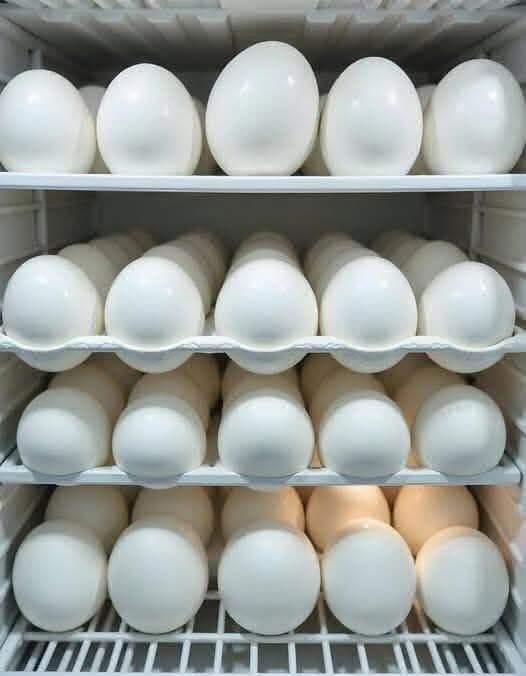Unlike mammals, birds excrete nitrogenous waste in the form of uric acid, which is a paste-like substance that conserves water. This adaptation is especially beneficial for birds living in arid environments, as it minimizes water loss.
🐴 Horses and Cows Sleep While Standing
Horses and cows have a specialized anatomical feature called the “stay apparatus,” which allows them to lock their legs and remain standing while they sleep. This ability helps them stay alert to potential predators.
🦇 The Bat Is the Only Mammal Capable of Flight
Bats are unique among mammals because they are the only ones capable of true flight. Their wings are a modified form of the forelimb, and their leg bones are so thin that they cannot walk effectively.
🐍 Snakes Can See Through Their Eyelids
Even when a snake’s eyes are closed, it can still perceive light and movement through its translucent eyelids, which act as a protective covering.
🐻 Polar Bears Have Black Skin
Despite their thick white fur, polar bears have black skin underneath. This dark pigmentation helps them absorb and retain heat from the sun, aiding in their survival in cold Arctic environments.
🪰 The Average Housefly Lives Only 2 to 3 Weeks
Houseflies have a short lifespan, typically living only 2 to 3 weeks. During this brief period, they undergo rapid development and reproduction, contributing to their abundance.
🐜 For Every Human, There Are Approximately One Million Ants
Ants are incredibly numerous and diverse. It’s estimated that for every human on Earth, there are about one million ants, showcasing their vast populations and ecological importance.
🦂 A Small Amount of Alcohol on a Scorpion Will Drive It Insane
When exposed to alcohol, scorpions exhibit erratic behavior and may sting themselves to death. This phenomenon has been observed in various studies and is a unique reaction among arthropods.
🐊 Alligators and Sharks Can Live for Up to 100 Years
Both alligators and sharks are among the longest-living animals, with some individuals reaching ages of up to 100 years. Their longevity is attributed to slow metabolism rates and evolutionary adaptations.
🐝 A Honeybee Has Two Stomachs
Honeybees possess two stomachs: one for storing nectar to be converted into honey, and another for digesting food. This specialization aids in their complex feeding and nectar processing behaviors.
🐘 Elephants Weigh Less Than the Tongue of a Blue Whale
Despite their massive size, elephants weigh less than the tongue of a blue whale, the largest animal on Earth. A blue whale’s heart alone can weigh as much as a car, highlighting the immense scale of these marine mammals.
🐋 Blue Whales Are the Largest Creatures to Ever Roam the Earth
Blue whales hold the record as the largest creatures to have ever lived on Earth, reaching lengths of up to 100 feet and weights of approximately 200 tons. Their sheer size is unparalleled in the animal kingdom.
🪳 A Cockroach Can Survive for About a Week Without Its Head
Cockroaches are renowned for their resilience. They can survive for about a week without their heads due to their decentralized nervous system, which allows them to function without a brain.
🐬 Dolphins Assist Sick or Injured Companions
Dolphins are known for their social behaviors and intelligence. When a dolphin is sick or injured, its cries of distress prompt other dolphins to assist, helping it surface to breathe and recover.
🐌 A Snail Can Sleep for Up to 3 Years
Some species of snails can enter a state of dormancy and sleep for up to three years, especially during unfavorable environmental conditions. During this period, they conserve energy and moisture.
🕊️ The Fastest Bird, the Spine-Tailed Swift, Can Fly at Speeds of Up to 106 mph
The spine-tailed swift is one of the fastest birds, capable of reaching speeds up to 106 mph during flight. The peregrine falcon holds the record for the fastest bird, diving at speeds of 390 km/h (108 mph).
🐄 A Cow Produces Nearly 200,000 Glasses of Milk in Her Lifetime
A single cow can produce nearly 200,000 glasses of milk over her lifetime, contributing significantly to dairy production worldwide.
🐍 The Leech Has 32 Brains
Leeches possess a unique anatomy with 32 distinct brains, each controlling different segments of their body. This segmentation allows for coordinated movement and feeding behaviors.
🐱 The Average Outdoor Cat Lives Only 3 Years
Outdoor cats face numerous hazards, including traffic, predators, and disease, leading to an average lifespan of only 3 years. In contrast, indoor-only cats can live 16 years or longer, enjoying a safer environment.
🦈 Sharks Are Immune to Every Disease, Including Cancer
Sharks are often considered immune to all diseases, including cancer. Their robust immune systems and unique genetic makeup contribute to their resistance to various illnesses.
🦟 A Mosquito’s Proboscis Has 47 Sharp Edges
A mosquito’s proboscis, the needle-like mouthpart used for feeding, contains 47 sharp edges that help it cut through skin and even protective clothing. This adaptation allows for efficient blood-feeding.
🧠 The Human Brain Has a Memory Capacity of Over 2.5 Million Petabytes
The human brain’s memory capacity is estimated to be over 2.





